In honor of Earth Day, three Case Design Project Developers sat down to talk about Case Design’s dedication to being green in the office, out in the field, and in their own homes.
These Project Developers all offer a unique, valuable perspective on how industry standards have changed because all of them have been working at Case Design for over seven years. Read on to see what Valery Tessier, Matt Dirksen, and Lisa Magee all had to say about being green in the remodeling industry.
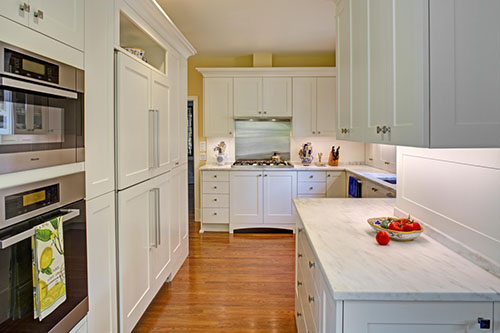
From a remodeling industry perspective, what does it mean to be green?
Reduce, re-use, recycle. It is about developing best practices. These include being energy efficient, using resources efficiently, being dedicated to homeowners’ health and wellness, and being ethical. Being green means different things depending on whom you are talking to, whether it is the company, supplier, trade, or client. People’s opinions differ based on what they value. In general, people tend to be most concerned about the manufacturing of the product itself.
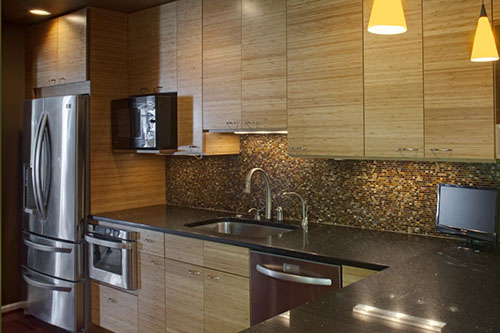
What does Case do at the office and out in the field to be green?
For Case Design, it’s about listening to our clients and picking up on their cues, and asking the right questions to see how clients interpret and value green, and only then do we offer recommendations. It is important to understand the “shade of green” that client wants.
It’s important for clients to know what their options are and have the choice to buy green materials. It’s our job to be aware of the newest and best eco-friendly methods and materials in order to offer clients the best possible options.
One way that Case Design is eco-friendly is by how we handle old, torn-out cabinetry. There are viable options to donate these cabinets or reuse them in other rooms in the home, such as the garage. Case Design often donates old cabinetry to Community Forklift, Loading Dock or Friendship Place. Case is committed to repurposing materials taken out during a renovation. Case’s showroom uses energy-efficient LED lighting, and we encourage clients to install high efficiency appliances.
We often suggest that clients do an energy audit to show them how their house performs. This audit typically costs about $100 and can ultimately save thousands of dollars and increase the longevity of their home. An energy audit is definitely something to consider if people are renovating their homes. In the field, some of the practices have changed based on codes and energy requirements. We have definitely become more energy efficient as a result.
One of the biggest issues with older homes is toxicity, and it increases as time goes on. Toxicity impacts everyone – both homeowners and their families. Toxicity is defined as airborne components that get into the air, often from carpet foam, paint, glue, or adhesives. These chemicals are referred to as VOCs – volatile organic compounds. It is comparable to trans-fats in foods in that people are becoming more aware of them and making an effort to avoid them. It’s good to let clients know what ingredients are going into their house, and being sure to leave out those that could pollute it.
Much of the Case Design team also goes green in their own homes, which demonstrates how important it is to us. For instance, Matt serves on the City of Greenbelt’s Advisory Committee of Environmental Sustainability, and has previously served on NARI’s Green building Committee. At home, Matt and his family compost, recycle, use rain barrels, and rely on solar panels for their electrical needs.
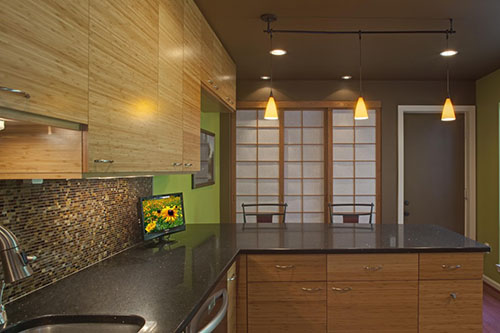
What does Case do differently that makes it stand apart from other companies that are also eco-friendly?
Our depth of experience is impressive. We are the biggest home remodeling company in the area, and our team brings together so many years of experience and knowledge about home remodeling and green initiatives. Over the span of eight years, nearly 30 of Case Design’s Project Developers, Project Managers, and Lead Carpenters have been Green Advantage Certified (GAC) at one time or another. We were already doing a lot of things that recently became required by law, like ensuring that air quality was safe. We are proactive in adopting green practices, not reactive.
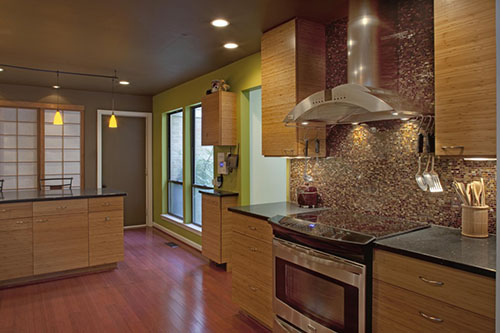
Do you think that people are becoming increasingly environmentally conscious as new studies are released about global climate changes, or have clients always been interested in this?
With allergies and sensitivities on the rise, families are more concerned about the wellbeing of kids and the elderly. Kids will bring the topic home and talk about energy conservation because it’s being discussed in school, so parents are aware and want to do their part. There is a generational difference due to the way information is being conveyed now, and it seems like younger generations are more aware and concerned about being green than ever before.
People do seem to be more aware now, but not necessarily more knowledgeable. Our clients want to be green – I have yet to meet a client who doesn’t recycle. People wonder if remodeling can be green. The answer is: yes, it can.
We have been coming across a lot more people who are interested in installing solar panels. People are gaining a greater interest in these types of green renovations, ones that are easily seen by neighbors and easier to show off. Solar panels seem to be trending more than other installations like water saving toilets.
It’s important for average homeowners to understand how they consume their resources. They have to become aware of metrics and units that explain how much energy they are using, and then create habits to conserve energy. The number one thing is to better understand what you consume and how you use your house. People now shop for cars looking at the “MPG” sticker. Soon, people might do the same with a new home.
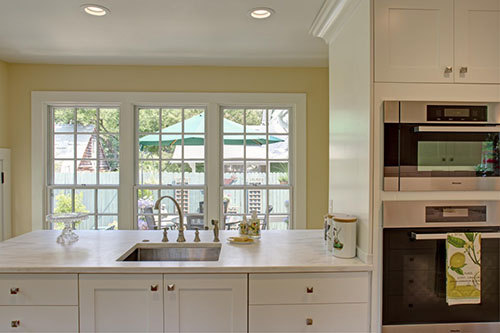
Are there any myths that you hope to dispel about building green, such as if the projects cost more to build?
It doesn’t cost more, especially now. Buying green materials and products is a worthwhile investment because they are typically the best quality. For instance, LED light bulbs may cost more than incandescent, but they don’t emit heat and you never have to change them. It is definitely worth it. Would you rather pay for it now, or have your children pay for it later?
Some people think you have to be entirely green or not at all. In fact, there are a lot of ways to be green. The most important thing is to know what green options are available to you, and make decisions that you trust you will feel good about in the long run.
Tell us, what are some ways you have become green in your home?